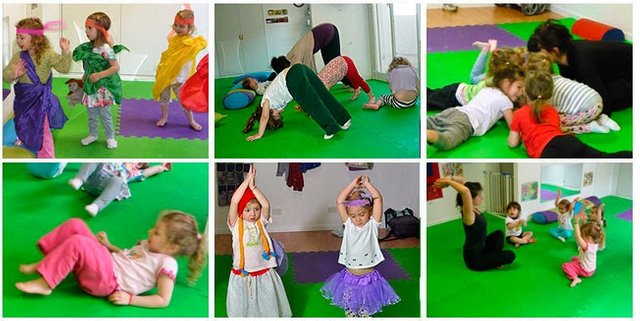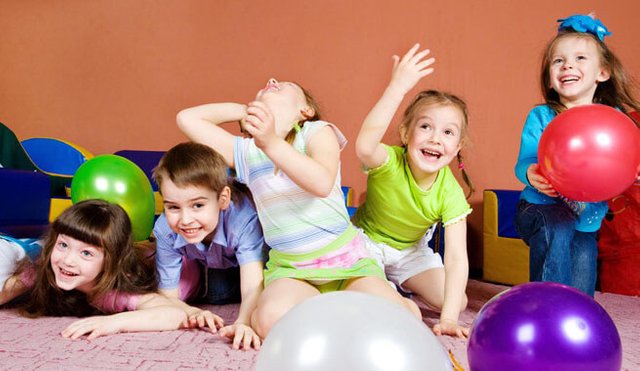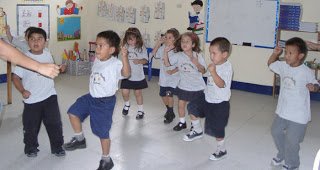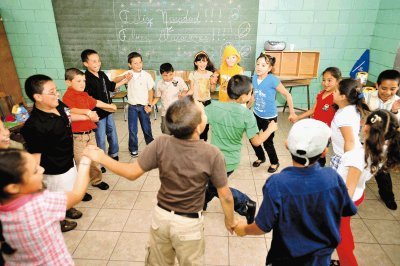How to use body language to educate! (Games and Activities)
Which indicates that, through our movements and facial gestures, we also send messages to those around us. Corporal expression has become a fundamental aspect of teaching and learning processes.

The educational programs have in the corporal expression an excellent didactic resource. For this, we must take into account:
The age and physical development of the students. Detect the needs and develop a plan.
Smile, show joy and anger at the right time, look directly at their faces, have upright and straight postures when speaking to them, transmit security and keep their attention. The latter must be the correct attitude of teachers, parents and mothers.
Plan outdoor activities. They are the most recommended: physical education, dances, mimes, dances, theater, etc., relax the mind and allow more freedom of action. Example: the circuits in which, in each season, children must perform a specific movement or sound. The animal circuit is very fun.

If the group presents children with some difficulty of movement (motor disability) we can incorporate activities that include the movement of the parts of the body that can move. In this way, we will also be working on integration.
Accompany the activities with music (if executed by themselves, better), since the musical sounds incite the movement unconsciously.
The characterizations of pre-established characters have given excellent results for the sample of feelings that children do not know how to express. Example: walk and language of sad, happy people, who have won the lottery, who have problems with alcohol, drugs, etc. As well as putting them together in short stories created by them with these themes.

- Allowing students to unleash their imagination in terms of the form of expression of issues raised, so the freedom to choose can also show their concerns, ideas, suggestions, feelings and concerns. Costumes, musical instruments and sports implements (balls, jump tapes, rackets, lights, baseball bats) are very useful.
- Teachers and parents can know how the lives of children and young people are just by paying attention to their movements, as they usually indicate nervousness, fatigue, success, failure, muscle tension, pain, joy, etc. Using this same way, the bodies and expressions of those around them also transmit messages to them. Thus, if we are angry or want to praise them for something, our arms will move towards the Robin Hood pose, applause or toward denial with the index finger.
Below I show you a series of Games or Activities that can be used in your classrooms to develop the corporal expression of your students:
"IMITÓN"
Duration: (20 min)
OBJECTIVES
Discover the possibilities of bodily communication through mime and be able to express and imitate with gestures.
Recognize different animals through their movements.
Be able to individually internalize different animals.
MATERIALS AND RESOURCES
Animal cards.
DEVELOPMENT
We will make groups of 5 to 10 children in class. Each group will have a box with different animal cards.
It will be a child who will draw the card and imitate the animal while the others try to guess what it is.
ACTIVITY VARIATIONS
In a previous session we can paint the different animals that we like or look for them on the Internet, to use them as cards.

"BUGUI BUGUI"
Duration: (10MIN)
OBJECTIVES:
Know and name different parts of the body.
Have fun and enjoy the musical expression.
MATERIALS
-Any
DEVELOPMENT:
We all go in a circle and one of the children says a part of the body, for example the head.
Then we all sing the song while we go around in a circle dancing. The song says like this:
HEY BUGUI BUGUI HEY (BIS) (we turn the circle forward catching the shoulders that we have in front of us, when HEY is said we raise both hands upwards) WITH THE HEAD TOWARDS THE HEAD OUT (BIS) WE GIVE A RING AND RETURN TO START (we put our heads inside the circle and then out, but our feet leave them still in place, then we turn around on our own and we grab the partner in front of us again.
Another partner will say another part of the body and the song will be repeated but showing that part of the body.

"THE BOAT HAS FLOODED"
Duration: (15 MINUTES)
OBJECTIVES
· Encourage cooperative work
· Develop imagination and symbolization
MATERIALS AND RESOURCES:
Swedish banks
DEVELOPMENT:
With his magic, Wizard Pincelín has put us all in a boat, but he has been shipwrecked ...
We put several banks that will be the islands. When the music sounds the children will have to pretend that they are swimming, and when they stop, they will have to get on the benches, helping each other, because if not the shark (teacher) can eat them. Little by little we will remove banks, and the children will have to help each other so that none are left in the water.
VARIATIONS:
After some child will be the shark.

WHO CAN STOP THE ROBOTS?
Duration: (15 MINUTES)
OBJECTIVES
· Internalize the body outline
· Develop expressivity.
MATERIALS AND RESOURCES:
Any
DEVELOPMENT:
It will turn us into robots that can only be stopped by pressing a button
The boy or girl who is left will have to leave the classroom, until the others decide what will be the button that goes to stop the robots (the nose, the right knee, an elbow, the mouth, an ear, ... )
When they enter, they will all walk like robots until they touch the agreed button (then they will stand still as statues). When all the robots are deactivated, another child will keep it.
VARIATIONS:
We can also agree on a "mother" robot, if it is deactivated, all will be deactivated.
You have been upvoted by the @sndbox-alpha! Our curation team is currently formed by @jeffbernst, @bitrocker2020, @zord189, @aaronleang, @jrswab & @teachblogger . We are seeking posts of the highest quality and we deem your endeavour as one of them. If you want to get to know more, feel free to check our blog.